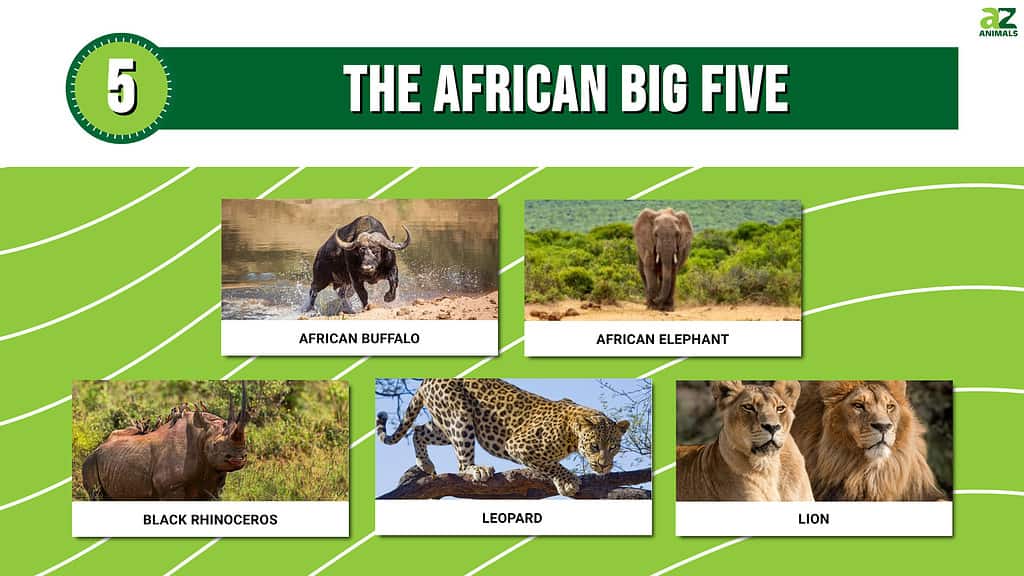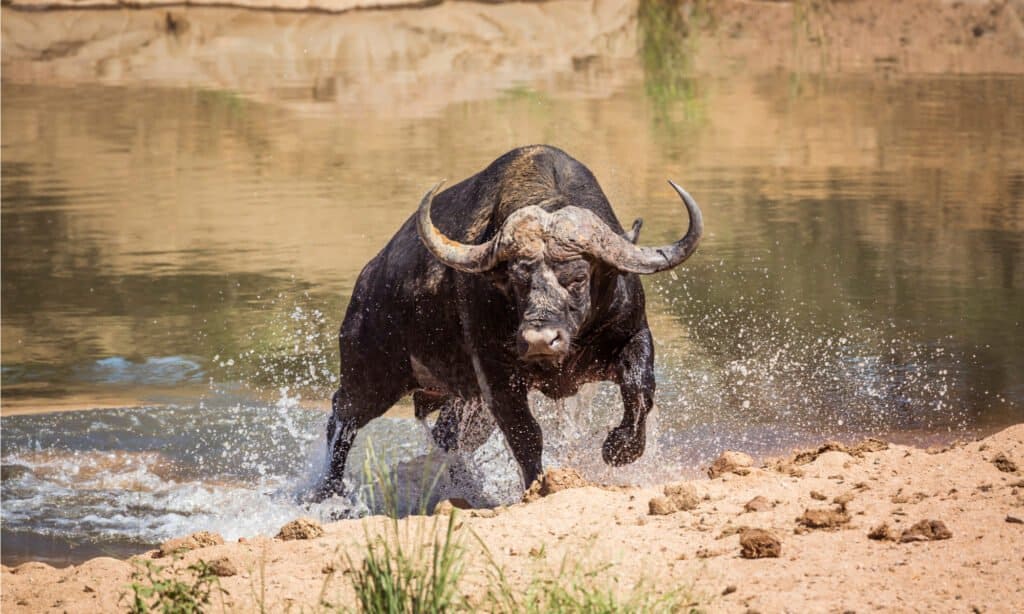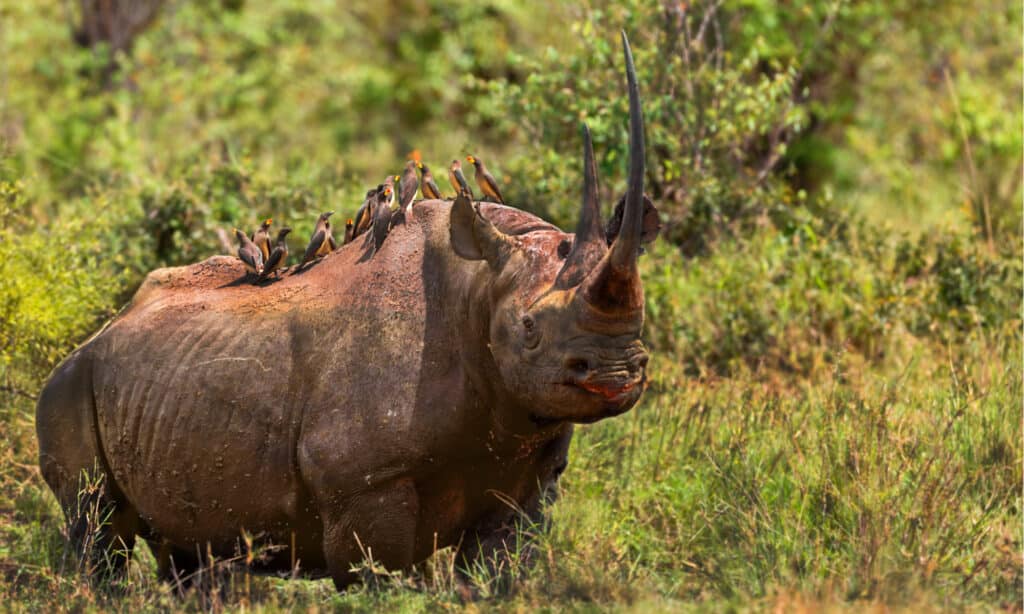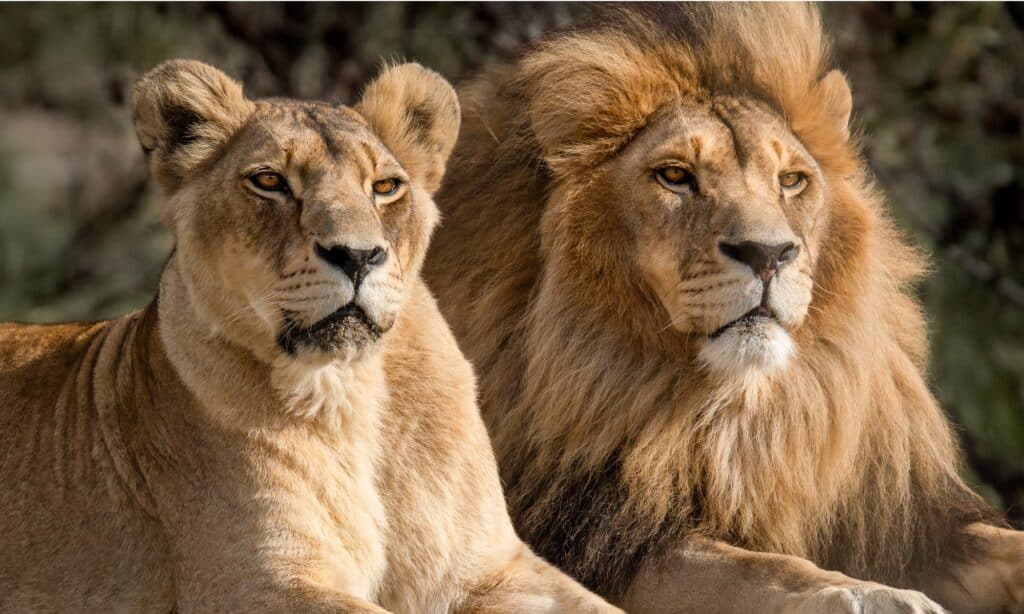If you aren’t familiar with African wildlife or hunting, then you may not have heard of the term “The Big Five” in regard to animals. While the term originated among hunters, it has expanded over the years. Now, you will find it used by safari guides and anyone else talking about African wildlife.
Whether you have a trip to Africa planned or just love learning about animals, finding out more about the Big Five Animals can be incredibly interesting.
Where the Term Came From
As mentioned, the term “The Big Five” comes from game hunters. The term dates back to the colonial period in the late 1800s. Surprisingly, it doesn’t refer to the largest animals that people have hunted in Africa. It refers to the hardest (and most dangerous) ones to hunt on foot.
These animals are:

The Switch from Hunting to Safaris
As mentioned, it is now very commonly used by safari guides. You will commonly see safari operators tell you that you will see the Big Five animals instead of individually listing them all.
Many tourists who visit certain parts of Africa make it their goal to see the Big Five. This is an especially admirable goal as all five of the species are facing decreases in their populations.
More on the Term and the Animals’ Importance
All of the Big Five game animals feature prominently in popular culture in various parts of Africa. They are also among the most famous of the continent’s large animals. Of course, given the size of the continent, not all of the Big Five are found in the wild in every country.
All of the Big Five are in the following countries:
- Angola
- Zambia
- Botswana
- Zimbabwe
- Tanzania
- Kenya
- Namibia
- South Africa
- Uganda
- Democratic Republic of Congo
- Malawi
- Rwanda
As an interesting note, South African banknotes (of the rand, the local currency) featured Big Five animals. Each animal appeared on a different denomination.
#1 African Buffalo

©PACO COMO/Shutterstock.com
When you spot African buffalos, they are almost always in large groups, frequently groups of thousands. This is one of the species’ defenses to keep predators away. Interestingly, this is the only of the Big Five that is not “threatened” or “endangered.”
Looking at African buffalos, you will notice that all of them have horns. You can tell the difference between males and females by taking a closer look at those horns. Males have horns that curve up and then fuse to form a “boss.” This is a bony plate in the center, and it is a key part of the animals’ defense.
If you see an African buffalo, like most of the other animals on this list, keep your distance. These animals are very large and known for being aggressive. If they aren’t in a protected area, there is a high risk of human conflict.
It is even risky for lions to take on an African buffalo. Between their aggressive nature, the fact that they weigh three times as much as the big cats, and the bony “boss,” lions would have their work cut out for them. It is not uncommon for a lion that attacks a buffalo to die. Despite this, lions are still the primary predators of buffalos.
You may look at the African buffalo and assume that the water buffalo is a close cousin. But that is not the case. Another big difference between the two is that no one has ever domesticated the African buffalo, as the animal is too dangerous.
#2 African Elephant

©Volodymyr Burdiak/Shutterstock.com
The African elephant is the largest of the Big Five, and it can easily weigh seven tons. As such, it should go without saying that you don’t want to interfere with them. They are also harder to hunt because there is a higher risk that they will charge you compared to some of the other Big Five, and they hide in the tall African grasses.
There are several types of African elephants, and depending on who you ask, all or some of them may be included in the Big Five. It is the African savanna elephant that can weigh seven tons. There are also smaller African forest elephants in the Congo Basin forests. These are about three feet smaller and genetically different. African bush elephants are closely related to the African forest elephant.
To give an idea of the habits and size of the African savanna elephant, consider that they can have a huge impact on the local landscape. They commonly pull up trees and turn areas into grasslands. They also tend to disperse seeds, increasing biodiversity. Nature has helped this process, as many plants evolved, so their seeds have to go through the digestive tract of an elephant before germinating.
Unfortunately for elephants, they have been among the most sought-after species by poachers for years, along with rhinos. This has led to their range being fragmented, especially in southern and central Africa.
One interesting fact about African elephants is that they use low-frequency communications that humans can’t hear. They use these sounds to communicate across many miles. Elephants are social, and the groups are led by matriarchs. Groups commonly have more than 100 elephants in them. Female calves will typically stay with the same group throughout their life. By contrast, males leave the herd when they are young adults, creating bachelor groups and then their own herds.
#3 Black Rhinoceros

©Maggy Meyer/Shutterstock.com
While some lists of the Big Five will specifically include the black rhinoceros, others will just include rhinoceroses in general, including white ones. But “white rhinos” don’t get their name from their color. It is from the Dutch word “weit,” meaning wide, describing their muzzle. Despite that, white rhinos are lighter, typically yellowish brown to slate gray.
The black and white rhinos are technically different species. There are five subspecies. Black subspecies include the southwestern, eastern, and southern central black rhinos. White subspecies include the southern and northern white rhino.
Unfortunately, these are the only five subspecies of this Big Five animal left. There were more subspecies, but poaching, especially for horns, has made several extinct. For example, the western black rhino officially went extinct fairly recently in 2011.
While northern white rhinos technically still exist, they are functionally extinct, as the last male died in 2018. If you want to spot a southern white rhino, you will have to go to southern Africa. Meanwhile, black rhinos are more common in southern and east Africa. Thanks to conservation efforts, the black rhino population is doing better than it used to.
Even so, out of all the Big Five, the rhino is the most endangered. The demand for horns has driven poaching. Because of this, most rhinos are in reserves or national parks.
An interesting note about rhinos is that while their smell and hearing are excellent, they have poor vision. As such, the first two senses frequently make up for the latter. Even so, you may spot a rhino attacking a rock or tree.
#4 Leopard

©lightstock/Shutterstock.com
Of the Big Five, the leopard is the smallest and the hardest to spot. Part of the reason why they are so hard to find is that they are solitary, secretive, and nocturnal.
Most leopards are lightly colored and feature their distinctive dark spots called rosettes. That being said, there are also black leopards. These are commonly called black panthers, and while they do have spots, they are nearly impossible to spot.
When leopards make a large kill, like an antelope or zebra, they will bring it up into a tree. This helps stop hyenas or lions from stealing their meal. This is also a safety measure, as leopards have predators of their own, including the lion.
In addition to the larger animals that they bring up into trees, leopards also sometimes eat crabs and fish. They are also great swimmers.
#5 Lion

©iStock.com/Shawn Levin
Lions stand out among big cats as the only one that is social. Unlike media portrayals, don’t expect them to have a monarchy. Instead, they may have a dominant male, but the dominant male can change very quickly. It definitely doesn’t depend on lineage.
But even if a male is in charge of the lions, their society is matrilineal. Females will stay in the pride that they are born in. In fact, it is much more common for females to be in charge as they hold their territories. While male lions do hunt, the lionesses are the primary hunters for their pride. They hunt in open areas in large groups, chasing down their prey until they exhaust it. Male lions, on the other hand, are typically solitary hunters who use areas with dense vegetation to sneak up on their targets.
Interestingly, lions’ manes get darker as the big cat ages. Lion cubs are also born with markings in the shape of a rosette. These fade as the lions age.
Conclusion
The Big Five animals are the five African animals that are hardest to hunt on foot. While the term was originally used by hunters, it is now more commonly associated with safaris. This is a natural result of the decline of hunting and the rise of safaris. Most of the Big Five are either threatened or endangered, with several rhino subspecies being extinct. As such, there are conservation efforts directed at many of these animals.
The Big 5 Summary
Below you’ll find the summary of the Big Five African animals, ranked by colonial hunting difficulty.
| Rank | Animal Name | Considerations |
|---|---|---|
| 1 | African Buffalo | These animals live in large groups, making them dangerous to approach on foot. |
| 2 | African Elephant | With some subspecies weighing up to seven tons, their size makes them formidable to smaller creatures (including humans). |
| 3 | Black Rhinoceros | Rhinos can be a major threat to humans who encroach on their territory thanks to their impressive size, horn, and charging power. |
| 4 | Leopard | Leopards are fast, stealthy felines that spend most of their time in trees. Not only are they difficult to spot, they use their high vantage point to pounce on prey from above. |
| 5 | Lion | Lions are the only big cats that live in communities. They are highly territorial, and often headed by the females of the pride. |
The photo featured at the top of this post is © Volodymyr Burdiak/Shutterstock.com
Thank you for reading! Have some feedback for us? Contact the AZ Animals editorial team.







